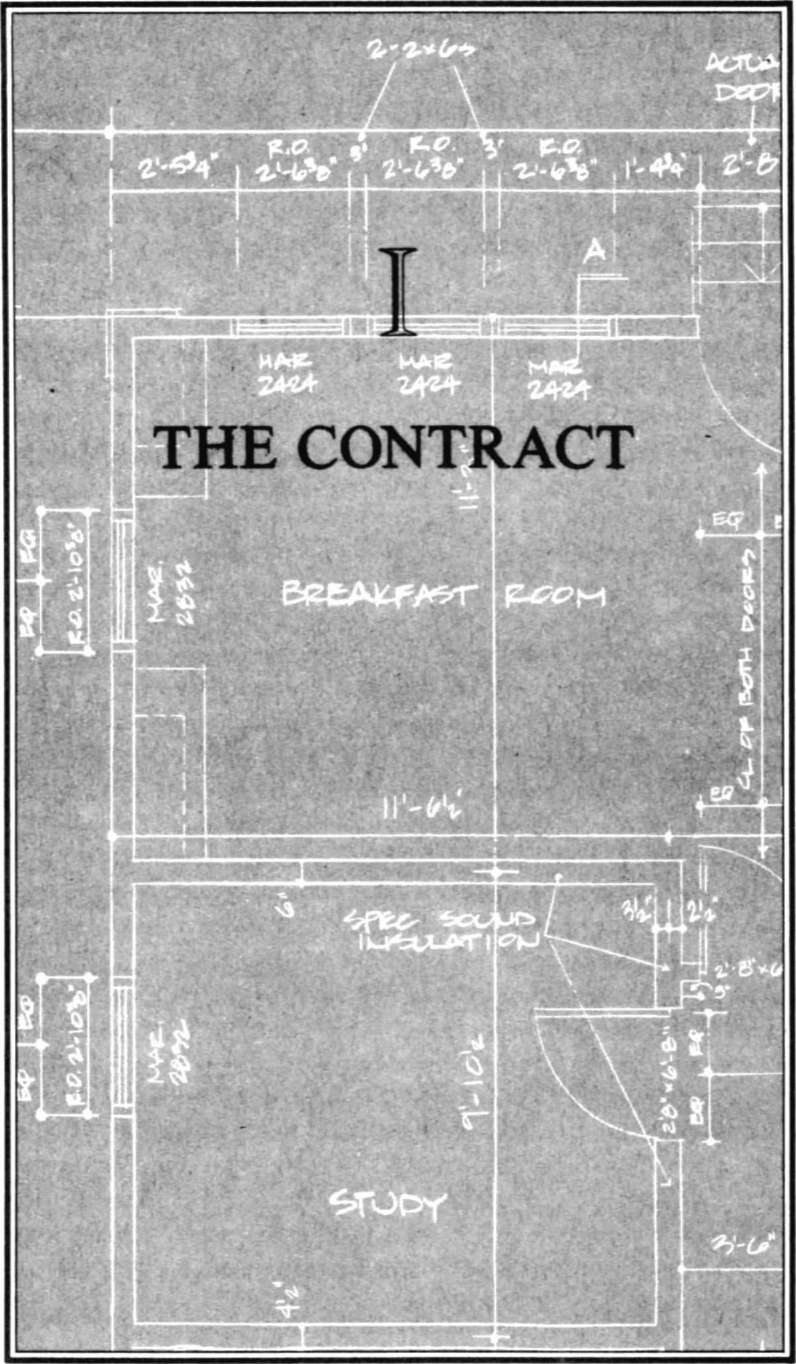FIRST MARINER BOOKS EDITION 1999
A Richard Todd Book
Afterword copyright 1999 by John Tracy Kidder
Copyright 1985 by John Tracy Kidder
Floor plans copyright 1985 by William Rawn Associates
ALL RIGHTS RESERVED
For information about permission to reproduce selections from this book, write to Permissions, Houghton Mifflin Company, 215 Park Avenue South, New York, New York 10003.
www.hmhco.com.
The Library of Congress has cataloged the print edition as follows:
Kidder, Tracy.
House / Tracy Kidder.1st Mariner Books ed.
p. cm.
ISBN -13: 978-0-618-00191-0 (pbk.)
ISBN -10: 0-618-00191-3 (pbk.)
1. House construction. I. Title.
TH 4811. K 48 1999 690'.837 dc21 98-43380 CIP
e ISBN 978-0-547-52617-1
v4.0717
Part-title drawings and the one on are by Jim Locke.
For Frances Toland Kidder
1
Jim Locke sets gently on the undisturbed earth a mahogany box, opens it, and takes out his transit, which looks like a spyglass. It is a tool for imposing levelness on an irregular world.
Lockes transit is made of steel with small brass adjusting wheels and is as old as the century, more than twice as old as Locke, who is thirty-six. He uses it near the beginnings of jobs and first of all for guiding bulldozers. Locke erects the transit on a tripod. He turns the brass wheels until the bubble, encased in glass beneath the eyepiece, floats to the center of its chamber. Then, bending over, putting one eye to the lens of the transit and squinting the other, he transforms his view of this patch of open ground into a narrow, well-lighted tunnel divided by cross hairs. Oliver Wendell Holmes once said, in another context, The art of civilization is the act of drawing lines. And of course it has also been the act of drawing level ones.
This piece of ground was once part of a New England hayfield. It lies on the southern outskirts of Amherst, Massachusetts, a college and university town, the kind of place that has a fine public school system and a foreign policy. The site has been studied all winter. It commands pretty views. Theres a deep-looking woods on one edge. On another, theres a pasture, which turns into the precipitous, forested, publicly owned hills known as the Holyoke Range. And to the north and east theres a panorama. Look north and you see a hillside orchard topped with two giant maples locally known as Castor and Pollux. Look a little east and your view extends out over a broad valley, all the way to the Pelham Hills, which have turned blue at this morning hour.
The air has some winter in it. On this morning in mid-April 1983 a New England spring snow is predicted. The sky looks prepared. It has a whitening look. Several weeks must pass before dandelions, but the urge to build has turned New Englands April into May. While Locke prepares for the transformation of this ground, four others pace around, killing time. They have their collars turned up and their hands thrust deep into coat pockets. They wait with reddening noses. None of the onlookers needs to be here, but none would have willingly stayed away. Among them is a very tall man, named Bill Rawn. He is the architect. He has driven all the way from Boston to witness the birth of the first house he has ever designed, and he grins while he waits. There are Judith and Jonathan Souweine, the woman and the man of the house to be. (Their surname is French and is pronounced Suh-wayne, or if one is in a hurry, Swayne.) They have spent months planning for this moment, and they have imagined it for many more. Judith and Jonathan smile at each other. Judith takes a few snapshots while Jim Locke works with the transit.
Turning her camera on Locke, Judith sees a refined-looking young man. When she met him about two months ago, she thought, Obviously, his upbringing was very upper middle class. Even if I hadnt known who his father was, I could have told. Everything about him waswell, you know. Hes made a conscious decision not to be a white-collar professional. Locke is wearing jeans and work boots and an old brown jacket, a workingmans uniform. His clothes are clean and he is clean-shaven. He has straight brown hair, neatly trimmed and combed, and a long, narrow jaw. There is a delicacy in his features. You can imagine his mother in him. He has a thoughtful air. He studies his transit a moment, laying two fingers against his lips. Then as he bends again to the eyepiece, he wipes his hair off his forehead and for a moment he looks boyish and defiant.
The building site slopes gently. Locke calculates by how much it does so. He turns the scope of the transit until he sees the cross hairs rest upon a numeral inscribed on a long, numbered staff. Judiths father has volunteered to carry the staff. Locke directs him to and fro. For a benchmark, Locke has chosen an electrical box planted in the ground nearby. He sends his staff-bearer to that spot first. The numbers Locke reads through his scope tell him how far below his transits scope the benchmark rests. He sends the staff-bearer to a stake that represents the southeastern corner of the house to come, and through the scope he determines how far below the benchmark that corner lies. Locke checks these numbers against ones inscribed on a blueprint opened on the ground beside him. Soon he knows the relative elevations of the land at each corner of the house. He will be able to tell through his spyglass when the cellar hole has been dug to the proper depth. The ceremony can begin, as soon as the bulldozer arrives.
When Locke has begun to wonder whether it is coming at all, it appearsa small, yellow machine on a large trailer. Locke gives the driver his instructions, while the others hang back. The bulldozer puffs smoke, and clanks down off the trailer.
The first pass the machine makes over the ground, ripping the hair off the earth, looks like an act of great violence. The bulldozer does resemble a beast, but the creature is both unruly and extremely methodical. Gradually, the sense of disruption goes out of the scene. The machine makes its first cuts. It goes back over the same suddenly dark ground. Piles of earth mount up. The hole deepens and, as sand appears, turns orange. Watching the bulldozer work is restful and mesmerizing. Its noise discourages speech, leaving each of the party alone and thoughtful for moments.
Ground breaking: On every continent and many islands, people used to undertake elaborate rituals when they undertook to build. Augury assisted choices and planning of sites. In northern Ireland, for example, lamps were placed on stones that marked two corners of an incipient house, and the site was deemed safe to build on if the lamps stayed lit for a few nights. Elsewhere, to ensure the strength and safety of a building, human and surrogate victimsanimals and various objectswere entombed under foundation stones. In the Balkans, as recently as the late 1800s, builders digging a foundation hole would entice a passer-by near so that the innocent victims shadow would fall into the excavation. The builders would cover the shadow with a stone, or mark out the shadows length and breadth and bury the measurement of it. The ritual ensured the foundations durability. The victim, it was thought, would die within the year.
No bodies are being buried in this deepening cellar hole. No one has watched for omens. There is only desire. This group does have a few worries. They have not settled all the details of the plan. They have not arrived at a final price for the house. They have not yet signed a contract. Jim Locke wanted all of that done before this day. Locke felt he had to go ahead, knowing that if he delayed he might not get the excavator for weeks. But Locke can imagine events that would leave him holding the bill for this work. Both he and the Souweines have begun to build on faith, without much knowledge of each other.
Next page








